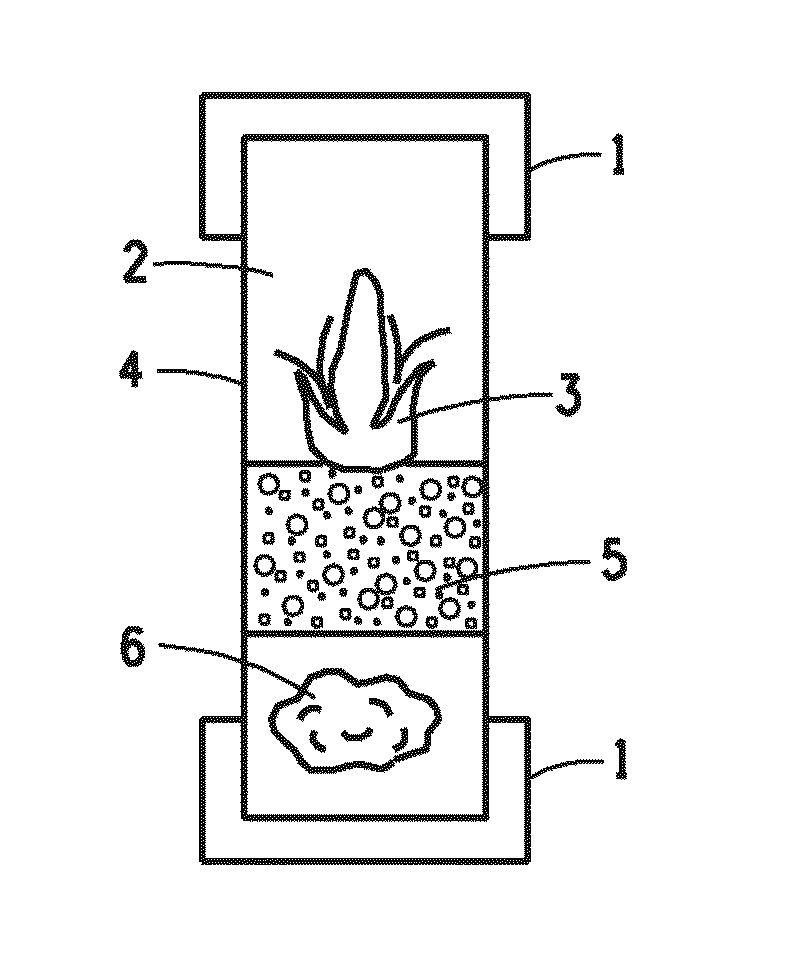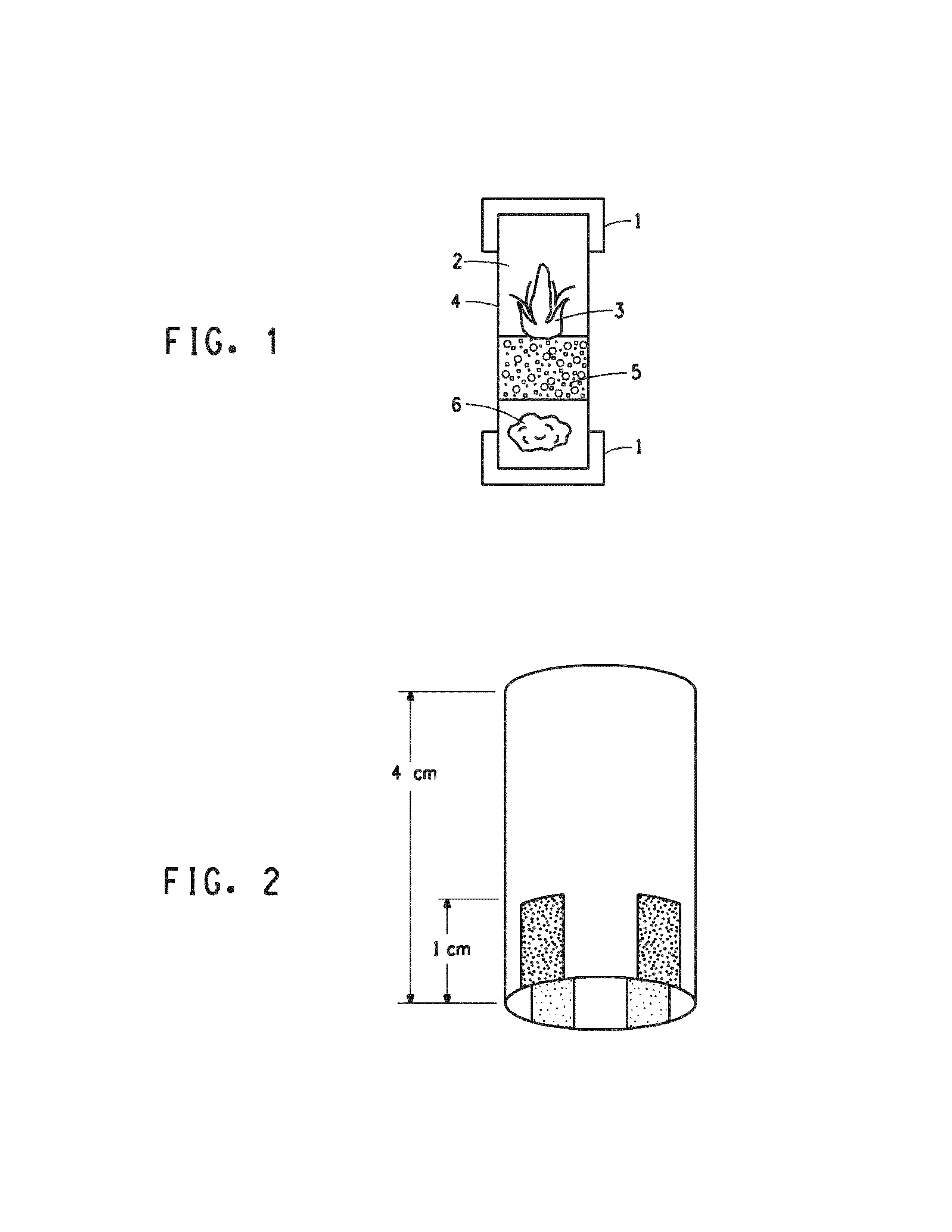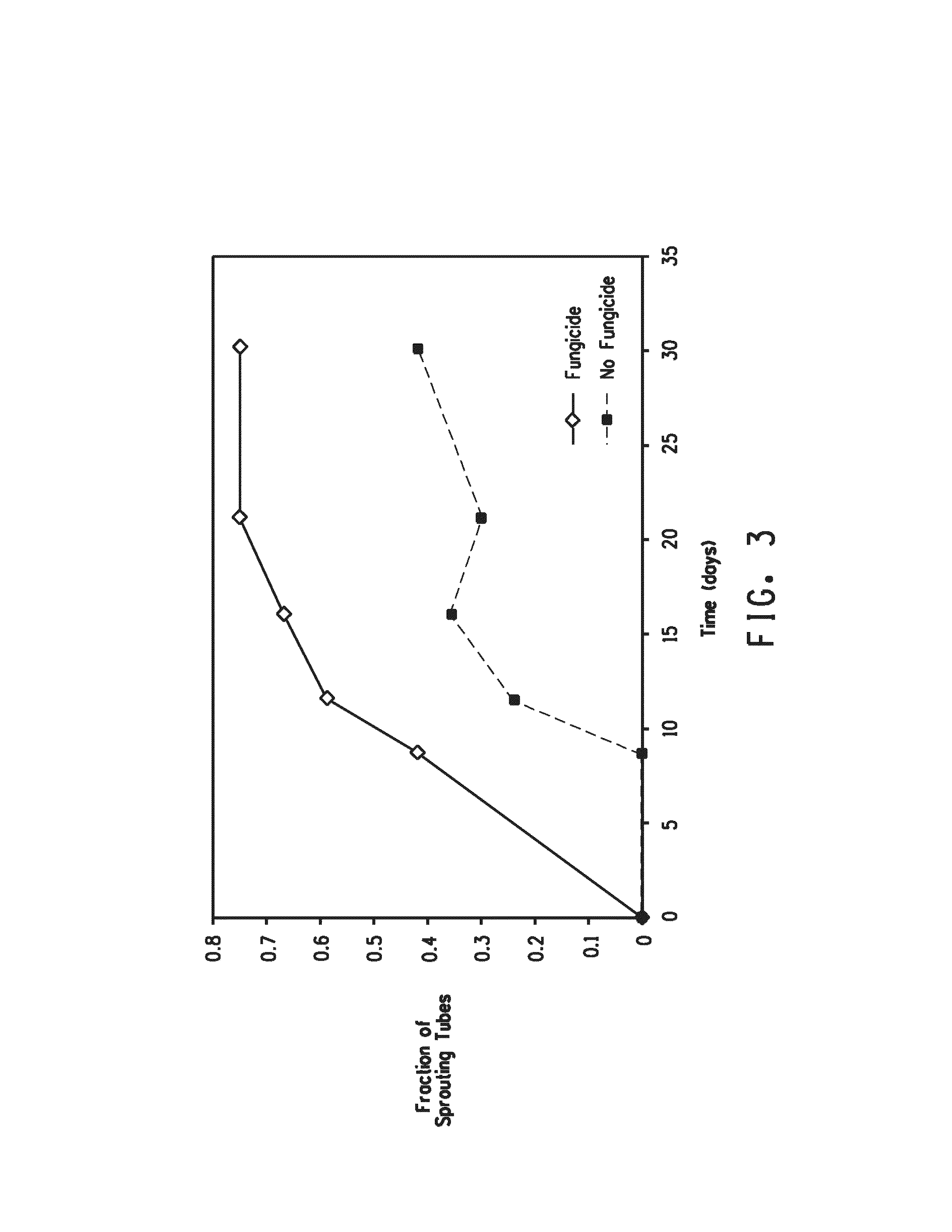Plant artificial seeds and methods for the production thereof
a technology of artificial seeds and plant tissues, applied in the field of plant artificial seeds, can solve the problems of poor growth and the inability to propagate the plant via seeds, and the low survival rate of the natural seeds of the plant, so as to improve the growth and viability of regenerable plant tissues
- Summary
- Abstract
- Description
- Claims
- Application Information
AI Technical Summary
Benefits of technology
Problems solved by technology
Method used
Image
Examples
example 1
Production of Sugarcane Regenerable Plant Tissue, Subsequent Fragmentation and Preparation of Plantlets
[0312]The Example below was designed to prepare plantlets that can be used for encapsulation in the paper and plastic containers for production of artificial seeds of sugarcane.
Week 1—Culture Initiation
[0313]1. Sugarcane stalks from 2 to 12-month-old plants of varieties CP01-1372 or KQ228 were cut the day of or one day before the excision of meristematic tissue (hereafter termed explant) for culturing. Leaf blades were trimmed closely, leaving the leaf sheaths intact. The stalks were stored in plastic bags overnight at room temperature if necessary.[0314]2. The stalks were trimmed to get closer to the meristem and then two to three outer leaf sheaths were removed. The stalks were sprayed with 70% ethanol to saturate the outer surface. Ethanol was sprayed to maintain sterility on the surface of each leaf sheath. The stalks were then transferred into laminar flow hoods.[0315]3. Leaf ...
example 2
Encapsulation of Sugarcane Plantlets in Wax Paper Containers to Provide Artificial Seeds
[0334]Artificial seeds were constructed as shown in FIG. 1. A cylindrical wax paper container (4) (Aardvark colossal drinking straw, 1.19 cm outer diameter) was cut into 6 cm lengths. A small piece of cotton (6) was inserted at one opening of the wax paper container and the container was autoclaved. In a sterile laminar flow hood, the other opening of the wax paper container, that did not contain the cotton, was stabbed into a Petri dish containing a approximately 1 cm layer of 0.8 weight percent (wt %) Difco™ agar containing MS nutrients, 0.2 wt % Plant Preservative Mixture™ (PPM) and 30 g / L sucrose, twice to get a approximately 2 cm plug of agar (5) that was pushed down, using a thinner wax paper container, onto the cotton layer in the wax paper container. Sugarcane plantlets, which had been regenerated (3) from proliferated bud tissue fragments in plantlet regeneration medium for 14 days post-...
example 3
Comparison of the Effect of Flat Openings Versus Crenellated Openings in Artificial Seeds on the Growth of Plantlets
[0337]This Example was designed to study the effect of crenellation at the bottom opening of the artificial seeds on improving root penetration. Wax paper containers were cut to 4 cm lengths with flat top and bottom openings, and compared to 5 cm paper containers with crenellated openings. The crenellation was the result of cutting three, 1 cm long and 3-4 mm wide tabs out of one opening of the container (FIG. 2) Crenellation was only used at the bottom opening of the wax paper container. A comparison was also made between the presence and absence of agar in artificial seeds on the growth of the tissue in this Example. Artificial seeds (with or without crenellation and with or without agar) were constructed in a laminar flow hood. In this experiment, agar had the same composition as described in Example 2, except that 20 g / L sucrose was used instead of 30 g / L sucrose. ...
PUM
 Login to View More
Login to View More Abstract
Description
Claims
Application Information
 Login to View More
Login to View More - R&D
- Intellectual Property
- Life Sciences
- Materials
- Tech Scout
- Unparalleled Data Quality
- Higher Quality Content
- 60% Fewer Hallucinations
Browse by: Latest US Patents, China's latest patents, Technical Efficacy Thesaurus, Application Domain, Technology Topic, Popular Technical Reports.
© 2025 PatSnap. All rights reserved.Legal|Privacy policy|Modern Slavery Act Transparency Statement|Sitemap|About US| Contact US: help@patsnap.com



